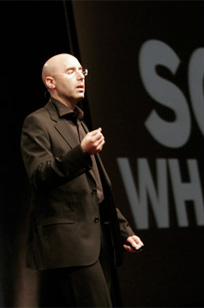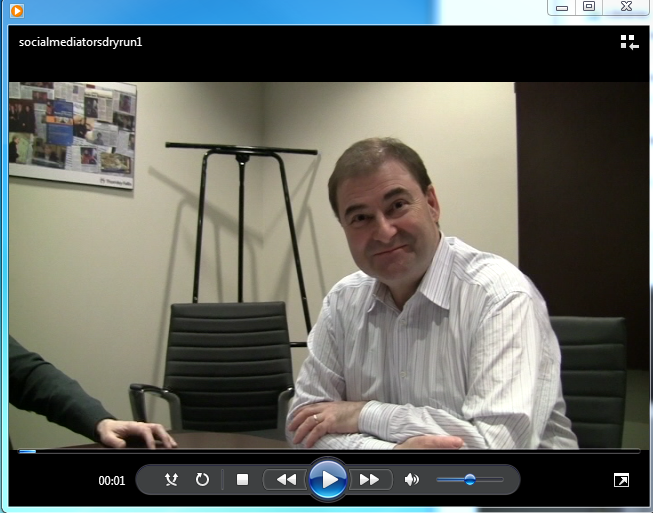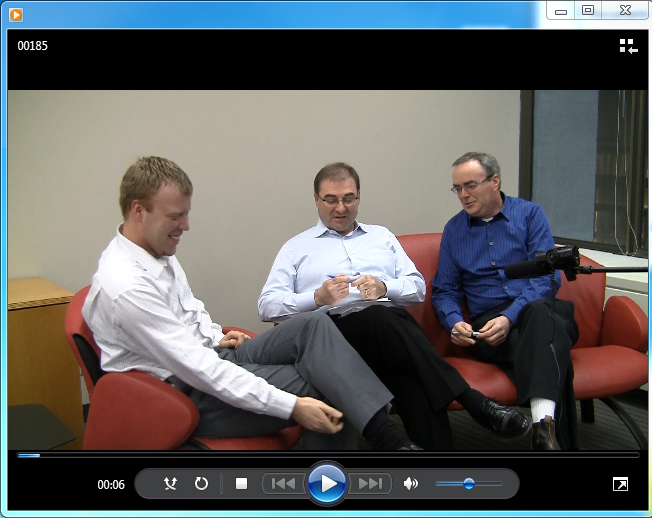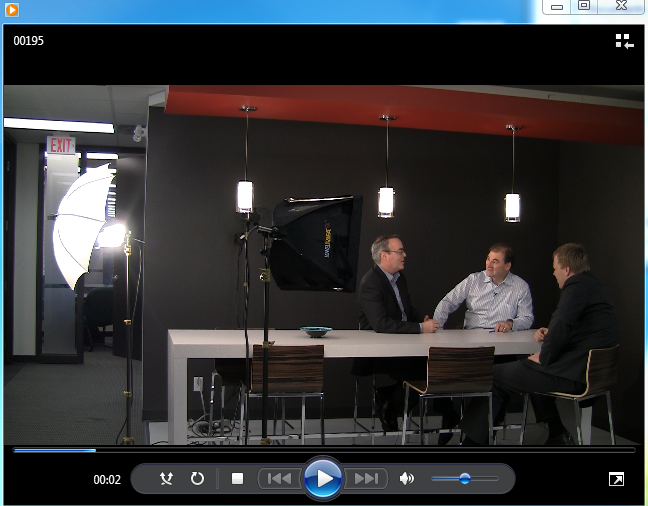Simple works
For the past four years, Thornley Fallis has had a simple, two sentence online communications policy: “Be smart. Cause no harm to any person.”
This simple policy has served us well. We had only a few bumps – and we learned from each one.
This policy worked because we have many people who are active in social media and they are steeped in the blogging culture. They understand the importance of transparency, authenticity and generosity. They also understand the power of search and the permanence of what we put on the Web.
New people. New needs
 A few months ago, we updated the Thornley Fallis and 76design Websites. In doing this, we introduced new Twitter feeds for both Thornley Fallis and 76design. We also created a page on our corporate Website that displays the current conversations our employees are having in social media. Each employee has their own page on which they can display whatever social media and information they want to share. They can add their personal blog feeds, links to their Facebook pages, Twitter streams, LinkedIn profiles – whatever social media they wanted.
A few months ago, we updated the Thornley Fallis and 76design Websites. In doing this, we introduced new Twitter feeds for both Thornley Fallis and 76design. We also created a page on our corporate Website that displays the current conversations our employees are having in social media. Each employee has their own page on which they can display whatever social media and information they want to share. They can add their personal blog feeds, links to their Facebook pages, Twitter streams, LinkedIn profiles – whatever social media they wanted.
I soon realized that our employees are generating much more social media traffic than I had been aware of. I also realized that not everyone spends as much time thinking about social media best practices as Dave Fleet or Terry Fallis might.
So, it’s time to take a second look at our online communications policy to be sure that it provides basic guidance for new employees and others new to social media and our perspective on its culture.
Under the hood
In refining our policy, I wanted it to be written in plain language. I also didn’t want to be so prescriptive that people would feel the need to refer to it constantly. And, bottom line, I respect the intelligence of the people I work with and trust their judgment. So, how to draft a policy that provides essential guidance but still puts the onus on people to exercise good judgment?
The answer, in my mind, is to ground the policy and guidelines in a clear statement of our objectives – why we are active in social media. Having stated this, I’m comfortable encouraging people to post freely if they know that their actions contribute to the achievement of our objectives. If they aren’t sure or feel that their posts/actions may actually detract from those objectives, then I suggest that they don’t post it. It in doubt, I ask people to consult a colleague before proceeding. Having spelled out this general framework, I needed only a handful of specific guidelines.
I posted the policy on our Internal Wiki and asked for comments. I received some good feedback from several people, including Jeremy Wright, Dave Fleet and Bradley Moseley-Williams. So, here’s the first draft of our new online communications policy.
What do you think of it? Have we missed something important? Would it work for your organization?
——————
Thornley Fallis Online Communications Policy
This policy is intended to provide us with practical guidelines that we can apply to ensure that our online actions and communications will make a positive contribution to our reputation as individuals and members of the Thornley Fallis & 76design team.
You’re always one of us
Each of us represents the company to the world and the character of the company is defined by our beliefs and actions. We must be mindful of this when participating in social media and any kind of online communications.
You may be active in social media on your own account. That’s good. But please remember that whether you are on your own time or company time, you’re still a member of our team. And the judgment you exercise on your own time reflects on the judgment you exercise at work. There’s only one you – at play and at work.
Our Objectives
First, when participating in social media, please always be mindful of why we are involved in social media. Our company’s objectives are:
- To educate ourselves.
- To contribute to our community by sharing our knowledge with others. (We believe in the culture of generosity and recognize that we should contribute more to the community than we take out.)
- To attract talented people
- To attract sophisticated clients
As a first step in deciding whether to write or post something online, ask yourself if doing so would contribute to the achievement of these objectives. If so, then publish away. If your post would be at odds with these objectives, please do not post it.
Guidelines
Of course, sometimes, it’s nice to have some simple, plain language guidelines to point the way. So, here are some basic rules for day to day conduct.
- Cause no harm to any person.
- Be respectful and civil in your tone. (After all, that’s the kind of people we are.)
- Respect our clients’ right to decide for themselves what they want to make public. Unless they specifically grant us permission, do not post about client wins or client assignments.
- Be transparent. If you are posting about a client or commenting on a client competitor or posting about anything in which we may have a material interest, disclose the relationship or interest.
Still in doubt?
If you’re still in doubt, seek out the counsel of one of you colleagues. Two sets of eyes are better than one.
 Each week, Terry Fallis, Dave Fleet and I will talk about social media, ubiquitous connectivity and their impact on communication, organizations and society. We’re always on, always connected. How are we taking advantage of the new capablities that gives us? And how is that affecting the way we relate to one another and how we organize around common interests? Finally, what does that mean for traditional organizations – companies, cause-based groups and government?
Each week, Terry Fallis, Dave Fleet and I will talk about social media, ubiquitous connectivity and their impact on communication, organizations and society. We’re always on, always connected. How are we taking advantage of the new capablities that gives us? And how is that affecting the way we relate to one another and how we organize around common interests? Finally, what does that mean for traditional organizations – companies, cause-based groups and government?









